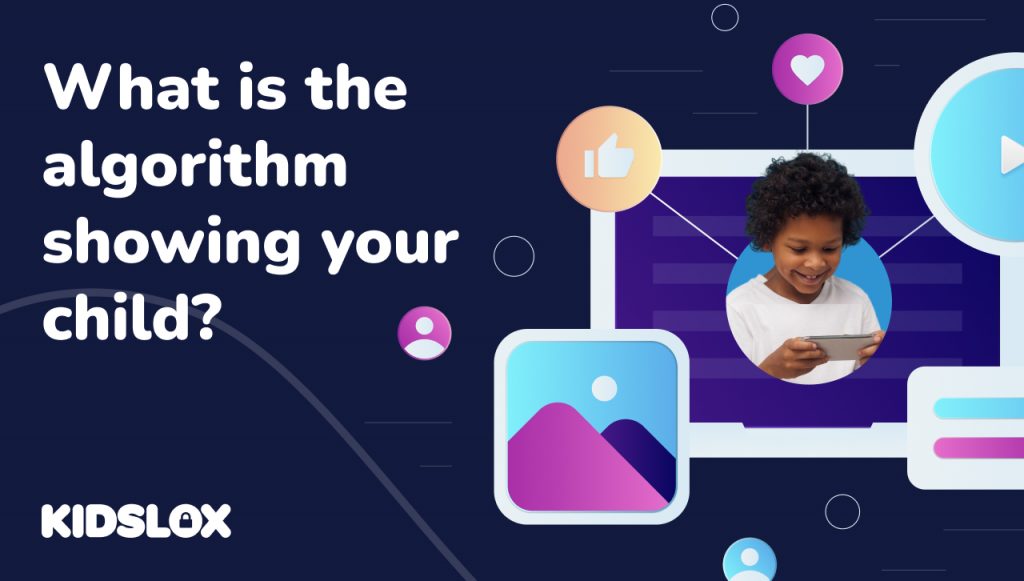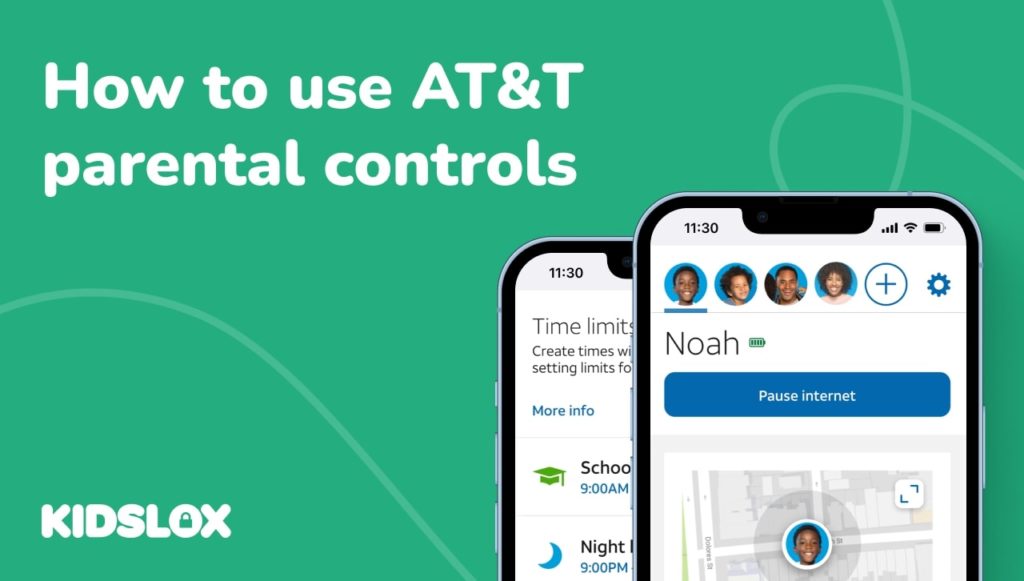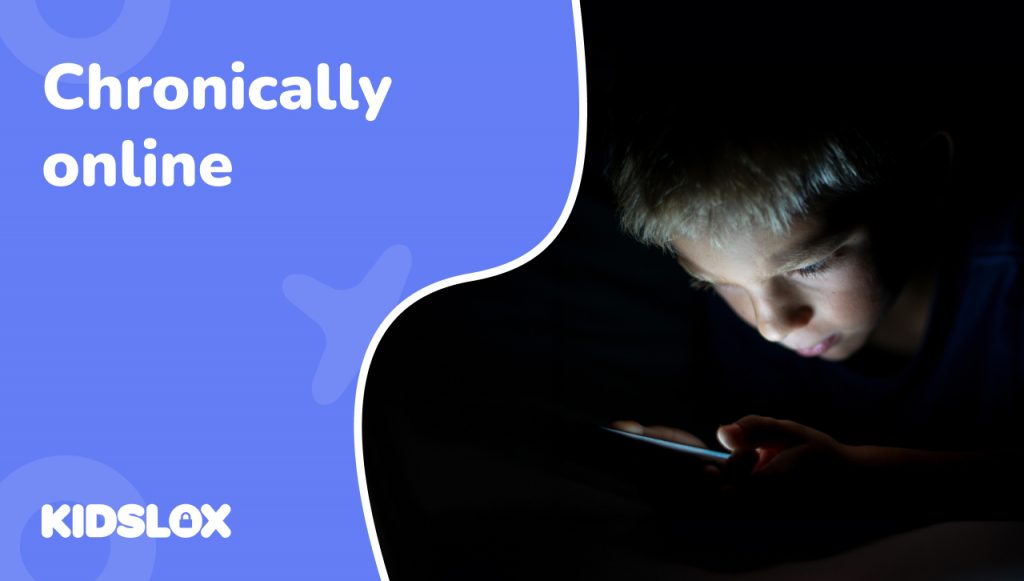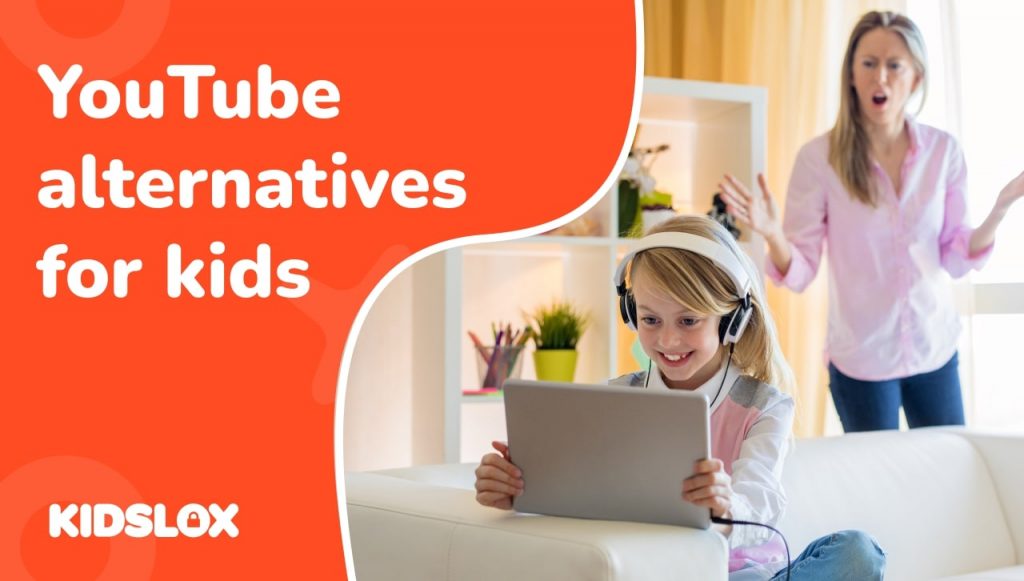The Hidden Influences Behind Your Child’s Screen Time
Social media is a significant part of many children’s lives, but behind the seemingly endless scroll of posts and videos lies a hidden force that determines what your child sees: social media algorithms. Whether it’s the Facebook algorithm, Instagram algorithm, or YouTube algorithm, these systems are constantly at work, curating content based on what they think your child will engage with the most.
Recently, the issue of harmful and repetitive content has sparked widespread concern. Platforms like Facebook and Instagram, which are often used by young people, have been criticized for pushing content that can negatively impact mental health. In fact, recent news highlights how easily these algorithms can expose children to inappropriate or harmful material.The idea that an algorithm, rather than human judgment, is deciding what our children consume online can be unsettling for many parents.
What Are Social Media Algorithms and Why Do They Matter?
At the heart of every social media platform lies a powerful mechanism: the algorithm. Social media algorithms are complex systems designed to determine what content appears in a user’s feed. They operate behind the scenes on platforms like Facebook, Instagram, and YouTube, tailoring content based on a user’s preferences, behaviors, and engagement patterns. For parents, understanding these algorithms is crucial because they are the gatekeepers of what your child sees, often without either of you realizing it.
How Social Media Algorithms Work
At a basic level, algorithms are designed to keep users engaged. When your child interacts with content—whether by liking a post, sharing a video, or even watching something for a few extra seconds—the algorithm takes note. The more interactions your child has with a certain type of content, the more likely the algorithm is to serve up similar content. For instance, if your child frequently watches makeup tutorials on YouTube, the platform’s algorithm will push more beauty-related videos into their recommendations, encouraging continued engagement.
Different platforms have their own algorithmic formulas, and these are top secret, but the goal remains the same: to maximize the time users spend on the platform. The following outline how different platforms appear to create algorithms to retain users’ attention:
Facebook Algorithm: This algorithm appears to prioritize posts that receive a lot of engagement, such as likes, shares, and comments, pushing them higher in the feed. It also appears to factor in who your child interacts with most frequently, leading to a more curated but potentially narrow view of content.
Instagram Algorithm: On Instagram, the algorithm seems to focus on interactions, post recency, and the relationship between users. If your child regularly engages with posts from a specific influencer, it’s likely they’ll see more from that account.
YouTube Algorithm: YouTube’s algorithm is particularly powerful, using user watch time and search history to suggest videos that match a viewer’s interests. The platform’s recommendation engine can easily lead children down rabbit holes of similar content, creating an addictive cycle.
These algorithms are designed to be self-sustaining. The more your child interacts, the more the algorithm learns, creating a feedback loop that can be hard to break.
Why Social Media Algorithms Matter for Parents
Algorithms aren’t neutral bystanders in our social media experience—they’re designed to prioritize content that generates more engagement. This can mean that sensationalist, addictive, or emotionally triggering content is more likely to be pushed to the top, keeping your child hooked.
For example, your child might start out watching harmless videos about fitness or diet tips on Instagram. But because the platform’s algorithm prioritizes engagement, it could soon start suggesting more extreme content, such as unhealthy dieting practices or body image challenges. Similarly, on YouTube, a child searching for a simple video on coping with anxiety could quickly be led to more distressing content about mental health struggles.
These tailored feeds are the reason many social media platforms have been criticized for their impact on young users. They present a curated, often repetitive stream of content that reinforces certain behaviors or interests, regardless of whether they are healthy or not.The consequences of this repetitive content can be serious, especially when it veers into harmful territory.
Key Concerns About Social Media Algorithms
Several issues arise when algorithms dictate what content our children are exposed to:
- Narrow Content Focus: Algorithms can create a “filter bubble,” where users are only exposed to a narrow slice of information or content that reinforces their existing interests. This lack of diversity can limit your child’s exposure to a range of ideas or perspectives.
- Repetition of Harmful Content: When harmful topics trend in an algorithm, such as extreme dieting or self-harm, children can be repeatedly exposed to dangerous content without even searching for it directly.
- Mental Health Impacts: The connection between social media algorithms and mental health is increasingly clear. Children exposed to unrealistic beauty standards, cyberbullying, or distressing news are more likely to experience anxiety, depression, and low self-esteem.
Understanding the way social media algorithms work is the first step in helping your child navigate these digital spaces safely. While these systems serve a purpose in keeping users engaged, they can easily go awry, leading to unhealthy viewing habits or the promotion of harmful content.
The Dark Side of Social Media Algorithms: Repetition and Harmful Content
While social media algorithms are designed to keep users engaged by curating personalized content, their darker side lies in their tendency to promote repetitive and sometimes harmful material. As a parent, this can be alarming, particularly when your child is continuously fed content that isn’t age-appropriate or emotionally healthy. These algorithms don’t always consider what’s beneficial for young minds; instead, they prioritize content that encourages more interaction, regardless of its impact.
Even more concerning is the way social media algorithms can amplify harmful topics. This is where the bias in algorithms becomes evident—certain types of content, especially those that generate strong emotional reactions, are often prioritized. Emotional engagement, whether it’s through excitement, anger, or fear, keeps users interacting, and the algorithm responds by pushing more of the same.
The Role of Social Media Platforms in Mental Health Issues
The connection between social media algorithms and mental health has become a growing concern among parents and experts alike. Children and teenagers are particularly vulnerable to the effects of algorithm-driven feeds. Research shows that excessive exposure to curated content that emphasizes unrealistic body images, negative news, or distressing personal stories can lead to anxiety, depression, and lower self-esteem.
Platforms like Instagram have been called out for promoting harmful beauty standards through their algorithm, leading many young users to compare themselves to unattainable ideals. Similarly, YouTube’s algorithm has been linked to a rise in compulsive video consumption, which can lead to increased anxiety and difficulty focusing on offline activities. The repetition of such content can trap children in a cycle where they continually seek validation through likes and views, fostering feelings of inadequacy or emotional instability.
Social media platforms have become deeply ingrained in the daily lives of children and teenagers, and while they provide opportunities for connection and entertainment, there’s growing concern about their impact on mental health. One of the primary drivers of this concern is the role that social media algorithms play in curating content. While these algorithms are designed to increase engagement and keep users on the platform, they can also lead to unintended consequences for young users, particularly when it comes to mental health.
Are Algorithms Emotionally Manipulating Us?
Social media algorithms are built to prioritize content that elicits a strong emotional response. Whether it’s excitement, outrage, or sadness, algorithms like those on Facebook, Instagram, and YouTube are optimized to promote posts that generate more engagement. For children and teens, this emotional manipulation can be particularly harmful, as their emotional regulation and critical thinking skills are still developing.
When algorithms repeatedly expose young users to emotionally charged or negative content, it can lead to feelings of anxiety, depression, or stress. For instance, a child scrolling through their Instagram feed might be constantly shown posts that promote unrealistic beauty standards or display the “perfect” lives of influencers. This content, selected by the Instagram algorithm, can cause them to feel inadequate or insecure, contributing to mental health struggles like body dysmorphia or low self-esteem.
Similarly, the YouTube algorithm often pushes videos that spark strong emotional reactions, such as sensationalist or shocking content. If a child frequently consumes these types of videos, it can distort their understanding of the world, making them more anxious or fearful. Over time, the emotional toll of this content can accumulate, leading to long-term psychological effects.
One of the most well-documented effects of social media on mental health is the rise of social comparison, and social media algorithms play a major role in perpetuating this issue. Platforms like Facebook and Instagram use algorithms to show users content from people they interact with the most, as well as from influencers or public figures. For children and teens, this often means their feeds are filled with images of people who appear to be living perfect lives—beautiful, successful, and always happy.
This constant exposure to highly curated, idealized content can cause young users to compare themselves to others in unhealthy ways. Social comparison, especially when driven by algorithms, can lead to feelings of inadequacy, loneliness, and jealousy. Young users may feel pressure to look or act a certain way to gain validation through likes, comments, or shares, further fueling the cycle of low self-esteem and anxiety.
For example, the Instagram algorithm often promotes posts from influencers who fit certain beauty standards or lifestyle goals. For teenagers, these posts can create unrealistic expectations about their appearance or lifestyle, making them feel as though they don’t measure up. Over time, these comparisons can negatively affect a young person’s self-image and contribute to mental health issues like depression or eating disorders.
What Parents Can Do to Protect Their Children?
Understanding the potential risks associated with social media algorithms is crucial for parents who want to ensure their children’s online experiences are safe and positive. While social media platforms are designed to keep users engaged, there are proactive steps you can take to mitigate the impact of harmful or repetitive content. Here’s how you can help protect your child from the adverse effects of social media algorithms:
- Educate Your Children About Social Media Algorithms
One of the most effective ways to protect your child is to educate them about how social media algorithms work. Open conversations about how platforms like Facebook, Instagram, and YouTube use algorithms to tailor content can empower your child to make more informed choices about their online behavior.
- Explain the Basics: Help your child understand that algorithms are designed to show them content that will keep them engaged, which can sometimes include repetitive or harmful material.
- Discuss the Impact: Talk about how constant exposure to certain types of content can affect their mood and self-esteem. Encourage them to think critically about the content they encounter and its potential impact.
- Set Screen Time Limits
Limiting screen time is a practical measure to help reduce the amount of time your child spends exposed to algorithm-driven content. By setting boundaries on how long they can spend on social media platforms, you can help mitigate the risk of social media algorithm addiction and give them time to engage in offline activities that promote well-being.
- Create a Schedule: Establish clear rules about when and how long your child can use social media. This can help them develop healthier digital habits and reduce the amount of time they spend interacting with potentially harmful content.
- Encourage Other Activities: Promote activities that don’t involve screens, such as sports, hobbies, or family time. Engaging in these activities can provide a healthier balance and reduce the likelihood of falling into algorithmic traps.
- Use Parental Controls and Privacy Settings
Most social media platforms offer parental controls and privacy settings that can help you manage what content your child has access to. Kidslox can help you to:
- Adjust Privacy Settings: Ensure that your child’s social media accounts are set to private to control who can see their posts and interactions.
- Monitor what they’re watching: With data, insights and telescope features to see their search history.
- Set Limits: To prevent endless scrolling and feeding the algorithm with more hints as to what they are most interested in.
Platforms like Facebook, Instagram, and YouTube have built-in parental controls that allow you to monitor and restrict the types of content your child can view. Take advantage of these features to help safeguard your child’s online experience.
- Encourage Critical Thinking and Media Literacy
Helping your child develop critical thinking skills and media literacy is essential in navigating the digital world safely. Equip them with the tools to analyze and question the content they encounter on social media.
- Teach Media Literacy: Educate your child about the nature of online content, including how algorithms curate and prioritize posts. Encourage them to question the motives behind content and be aware of its potential impact.
- Foster Open Dialogue: Create an environment where your child feels comfortable discussing their online experiences with you. This can help you stay informed about the types of content they are exposed to and address any concerns that arise.
- Monitor Content and Usage
Keeping an eye on what your child is viewing on social media can help you identify and address any potential issues early on. Regularly review their social media activity to ensure they are not exposed to harmful or repetitive content.
- Check Their Feeds: Occasionally review the content your child is interacting with on platforms like Facebook, Instagram, and YouTube. Look for any patterns of repetitive or concerning content that may indicate an issue.
- Discuss Concerns: If you notice anything problematic, have a conversation with your child about it. Address any concerns openly and work together to find solutions.
- Promote Positive Online Behavior
Encouraging your child to engage in positive and respectful behavior online can help counteract the negative effects of algorithm-driven content. Promote a healthy online environment by modeling good digital behavior and encouraging your child to do the same.
- Model Positive Behavior: Set an example by using social media in a positive and responsible manner. Show your child how to engage with content thoughtfully and respectfully.
- Encourage Positive Interactions: Support your child in following accounts that promote positivity, education, and healthy interests. Encourage them to engage with content that contributes positively to their well-being.
- Seek Professional Help if Needed
If you notice significant changes in your child’s behavior or mental health related to their social media use, don’t hesitate to seek professional help. Mental health professionals can provide support and guidance in addressing issues related to social media and its impact.
Social media algorithms are powerful tools that shape the content your child encounters online. While they are designed to enhance user engagement, they can also lead to repetitive and harmful content that impacts mental health. As a parent, understanding how these algorithms work and taking proactive steps to protect your child is essential in fostering a positive and safe digital environment.
By educating your child, setting screen time limits, using parental controls, promoting media literacy, and monitoring their online activity, you can help mitigate the risks associated with social media algorithms. Remember, staying informed and engaged with your child’s online experiences is key to ensuring their well-being in the digital world.





